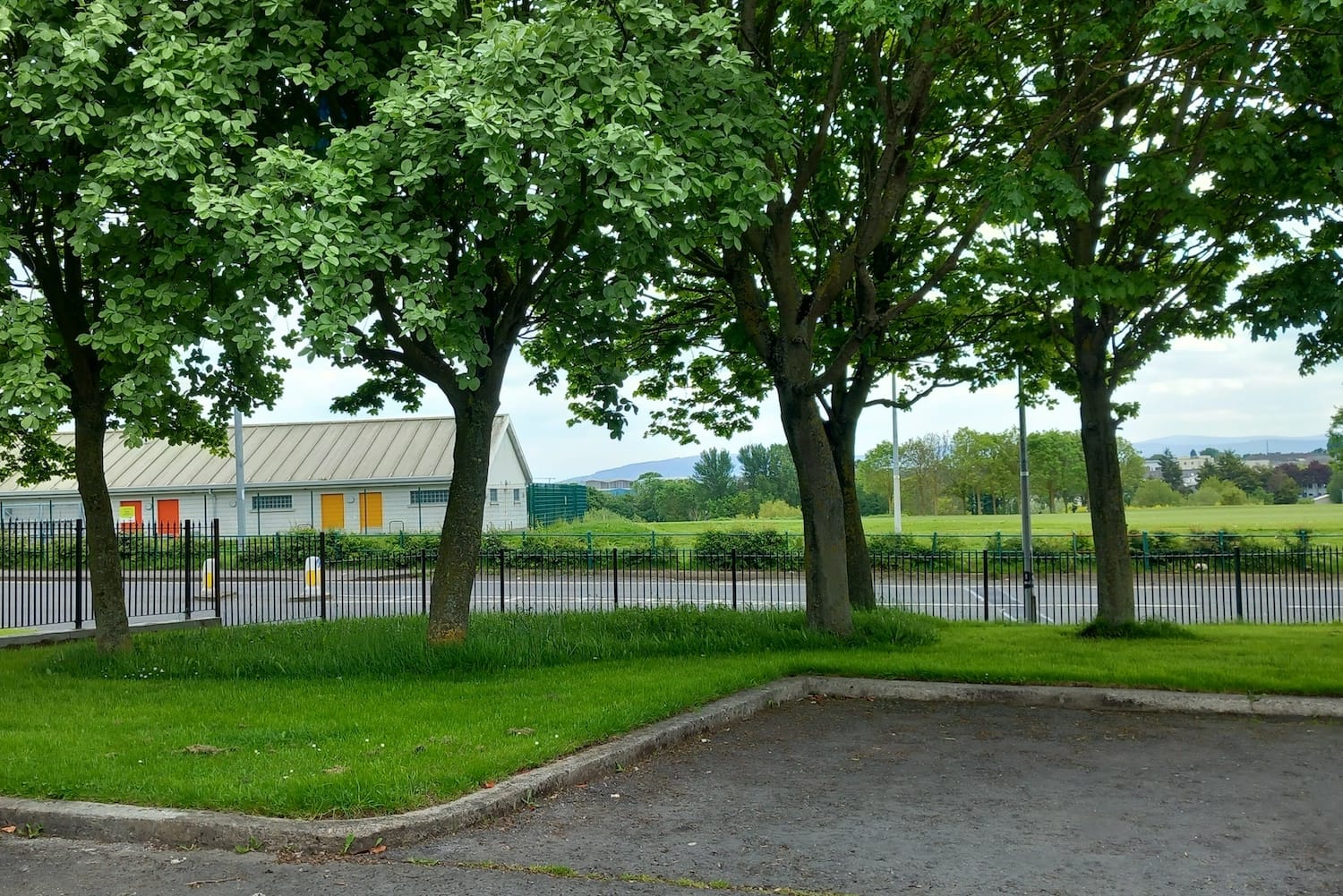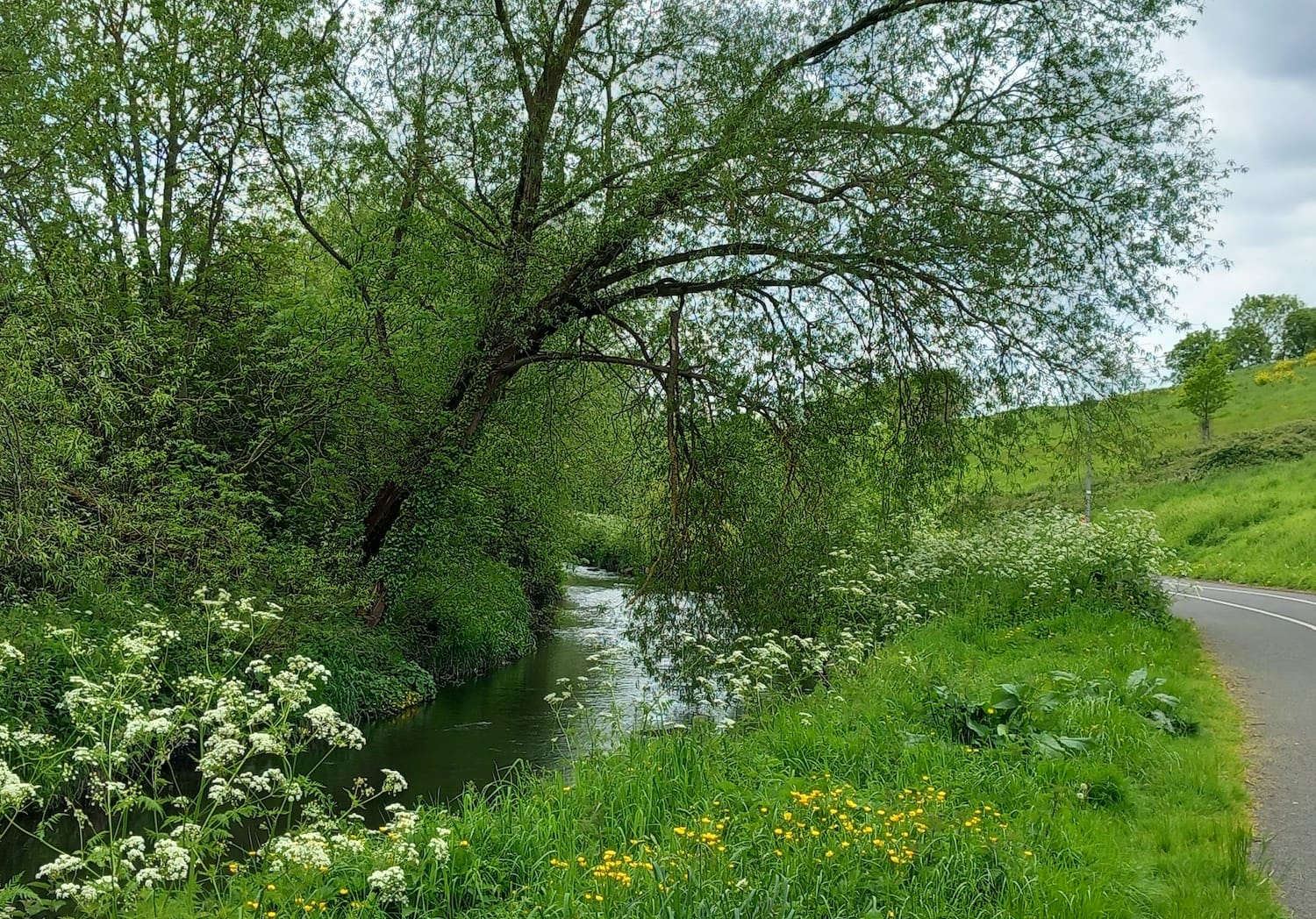What’s the best way to tell area residents about plans for a new asylum shelter nearby?
The government should tell communities directly about plans for new asylum shelters, some activists and politicians say.
At the request of some residents, the council recently installed yet another fence in Finglas South, this one blocking a shortcut to the park and a bus stop.

A few weeks ago, the council installed a fence between the homes on Gortbeg Drive in Finglas South, and the nearby main roads.
Before, the trip from the homes at the end of this cul-de-sac to the park or bus stop was a no-minute walk across a strip of grass and then across a road.
Now, it’s about a five-minute walk along the footpaths, past well-kept gardens and neat houses, out onto St Helena’s Road and back down to the other side of the new fence.
Five minutes is not a long walk, says John Redmond of the Lakeglen Residents’ Association.
The area has a history of serious crime, as well as more petty stuff like kids kicking over bins and egging houses, Redmond says.
There used to be 15 ways in and out of the estate and over the years residents have winnowed those down now to just one. And any inconvenience that creates is worth the increase in peace and safety, Redmond says.
“As a resident down here of 50 years, I’m quite happy to walk around, into the park, whether I have my grandchildren or not,” he said.
Yes, it’s only a five-minute walk for an able-bodied young adult, but it’s a move in the wrong direction, says Simon Boyne, who lives in Finglas East.
It’s just one fence and just a short walk, says Boyne. But “all these just-one-more-fences are like death by 1,000 cuts”.
“We’re trying to encourage walkability and cycling etc. and this just means that more and more journeys become longer,” he says.
The National Transport Authority (NTA) says best practice is that “closures of existing connecting links should be the exception rather than the rule”.
But “in cases where exceptional circumstances apply and all measures to overcome the issues have been exhausted, it may be accepted that a right-of-way is shut down”, it says.
On the sunny afternoon of Tuesday 16 May, a man, a woman and a toddler were making their way together slowly from inside the estate towards the exit.
From where they were standing, the green expanse of Tolka Valley Park was visible. A stone’s throw away for someone with a good arm.
Within the park, there’s a sports pitch and changing rooms, a playground, and wide expanses of grass criss-crossed with paths. Further in, the Tolka River burbles along, tree branches hanging low over it, wildflowers growing alongside it.
But between this family and the playground are two fences: the one separating Gortbeg Drive from Tolka Valley Road, and the one on the other side of that road, separating it from the park. The first has no gate, no way through, and the second has kissing gates.
To get to the park, they’d have to go up Gortbeg Road, out Gortmore Road, turn right onto St Helena’s Drive and walk down towards the park that way.
Along the way, they’d pass two sets of steps up from the footpath along St Helena’s Road towards Gortbeg Avenue. But the steps end at a fence, and there’s no way through.
Then it’s past the new fence at the end of Gortbeg Drive, past the bus stop to the left on Tolka Valley Road, where the 40 bus into town passes by frequently, and across the road to the park.
“There’s wonderful, wonderful people out here,” says Redmond, of the Lakeglen Residents Association. “But we’ve been through some ups and downs.”
He tells stories of crime and drugs and violence and intimidation in the 1970s and ’80s, particularly in “The Valley” between Lakeglen Estate and a neighbouring estate.
“Burnt out cars, you name it, drugs, you name it. The guards couldn’t control it, the community couldn’t control it,” he says.
“We had to get out and demonstrate when these drug dealers were down at the end of our road and stand in front of them and try to shame them away and move them on somewhere else,” he says.
Sinn Féin Councillor Anthony Connaghan says there were gangs operating in the area years ago, “a long time before my time”. “There was a lot of trouble”, he says.
The gangs “would have went through the estate just going to other parts of Finglas South and they would have been breaking into cars, you know, they could have been stealing cars, they could have been casing houses, anything basically”, he says.
Because of all the crime, residents asked for the estate to be fenced off from surrounding areas, Connaghan says.
“One section of it was left out because a few residents objected, so they left that corner clear,” he says, leaving the route out the end of Gortbeg Drive onto Tolka Valley Road.
In more recent years, “there has been more antisocial behavior”, Connolly says, “scrambler bikes have been going through”.
“There’s a couple of elderly people and there’s one man whose wife would be very sick, they were at the coalface of getting scramblers driving up to their house or being egged,” he said.
Says Fianna Fáil Councillor Keith Connolly: “There are wheelie bins being robbed, houses being egged, stones being thrown at their windows.”
So residents have been asking for this new stretch of fence to be put in to close off that route through the estate to the main road and the park, says Connaghan.
Says Redmond, of the residents association: “There comes a point, in our lives, especially when you’re older, like me and people in their 80s, who are – I’m not saying on our last legs, but we’re trying to have a little bit of peace in our lives, that’s what we’re trying to do.”
“I’d love for that plinth wall and railing [the fence] not to be there, to be honest with you,” he says. “But it’s a necessity.”


Boyne, however, who lives up the way and passes by on his bike regularly on the way to drop his kid to a childminder’s, questions whether the fences really are a necessity.
“I mean, has the decades of fencing solved the anti-social behavior?” he asks.
“Well, clearly not because we’re now still here and we’re still putting up fences and the kids that were kicking over bins will go and kick bins over somewhere else,” he says.
So if fences aren’t the answer, what is? “I mean, primarily, it’s a Garda issue right? If there’s anti-social behavior, then we should have sufficient Gardaí to deal with the issue right?” Boyne says.
If kids are causing trouble in part because they don’t have enough to do, making it harder for them to get to the local park “is not really going to help them have more to do right?” he says.
Connolly, the Fianna Fáil councillor, says the council looked at various options, including leaving a gate in the fence for people to walk through.
But after consulting with local residents, they decided to go with the complete, tall, closed fence, he said.
Connaghan, the Sinn Féin councillor, said: “Ideally, we’d love to see no fences, but unfortunately, practically and realistically, for people that live in those areas that have been tormented, the fences are a godsend,” he says.
“It may be an extra few minutes for people if they’re going to get the bus or access the park, but you’re going to have to weigh it up,” he says.
That few extra minutes can have significant impacts, says a 2015 document from the NTA called “Permeability: Best Practice Guide”.
Closing links like this one encourages people to drive more, rather than walking or cycling, which costs more, and leads to increases in congestion, pollution, and carbon-emissions.
It can also undermine the viability of public transport routes in the area, as fewer people use them, leading to service being cut back, the NTA guide says.
“This would have the most severe effects on those that require public transport the most – those who do not own a car, cannot drive for medical reasons, or are otherwise mobility impaired,” it says.
And, in places where there are local shops, it undermines their ability to keep trading, it says. Once someone gets in their car to go get what they need, they might well go to a bigger shop further out instead.
“A single closure may not appear to have these impacts but the cumulative effects of several closures can be significant on a district-wide level,” the guide says.
Is it possible that some of the policies the NTA and the council are promoting in Dublin – such as keeping and opening up more walking and cycling routes – just aren’t really going to work well in areas suffering from visible crime and anti-social behaviour?
Redmond says he supports more walking and cycling, and taking better care of the environment – and he’d think other people in Lakeglen do too. “But come and live in Finglas South,” he says.
Independent Councillor Sophie Nicoullaud, who has a master’s in town planning, and represents Ballyfermot-Drimnagh, says different areas of the city are geographically and socially different and should be treated as such.
That’s why it’s important that the council’s active travel team make an effort “to have a really holistic approach with engineers, with proper urbanists and geographers and social workers to look at it and how we can do it for each area”, she says.
“It’s important to consult with local residents, they’re the ones who know the area the most,” she says. “It’s not somebody in an office in the city centre that can solve all the problems.”
It can be a real challenge making some suburban areas better for walking, Nicoullaud says.
“It’s a flaw from the beginning: those estates were built around cars anyway,” she says.
“And now that’s what we are left with to deal with today, in an era where we moving away from that we’re doing the opposite, so how do we go about it?”
As for what to do at Lakeglen, with the fences and all, she says she doesn’t know the specifics of the situation, but crime and anti-social behaviour generally have deeper roots than whether a walking route is open or closed.
“So trying to find out what’s the situation and you know, and to accept as well if there’s drug issues, well having a nice laneway or no laneway would not have solved the drug issue, you know, or anti-social behavior,” she says.
Get our latest headlines in one of them, and recommendations for things to do in Dublin in the other.